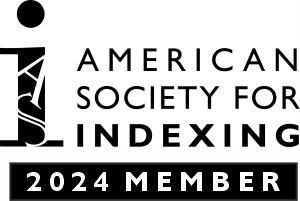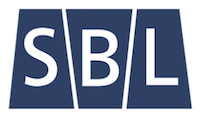
Last month, Richard Shrout and I attended the ASI Annual Conference in Chicago, presented in conjunction with the Indexing Society of Canada (ISC/SCI). The conference had much to offer, from networking to catching up with friends to exploring new indexing skills. There were many excellent sessions, and lots to learn, on specialties from textbook indexing to digital publishing.
As someone who has worked in a university archives and a public library with a strong local history collection, the most exciting session for me was one in the very last time slot, on indexing oral histories, presented in two parts by Mary Newberry, a member of ISC/SCI, and Lee Berry, of the Chemical Heritage Foundation (CHF) and member of ASI.
Oral histories present an interesting puzzle to indexers—the various voices and subject matter make creating a cohesive method of accessing the information different from an index at the back of a single-author book. In some ways, the challenges are similar to the challenges facing indexers of multi-author books (different vocabulary used to describe the same thing, for example), or to the challenges facing periodical indexers (a variety of subjects and the need to anticipate future additional material).
The key, as in all indexing projects, lies in the controlled vocabulary. We know that periodical indexes and databases must use controlled vocabularies, or a set of terms to be used to describe the information to be accessed, and while we don’t think of a straightforward back-of-book index to a monograph as having a controlled vocabulary, that’s exactly what its system of See and See also cross-references provide.
But how to produce that controlled vocabulary?
The snippet
Mary Newberry talked about her work with the Harbord Village Oral History Project, a project that brought the Toronto neighborhood’s past into its present. Key to the project is its searchable index of the recorded stories from residents about the area before 1975.
Mary’s team eventually decided on a three-layer vocabulary. The top two layers are familiar to indexers—a set of themes and sub-themes such as “Housing & Home Life: Air Conditioning” form the prescribed subjects and names, important to a neighborhood boasting multiple generations of families, and businesses that change hands. The third layer is what makes their solution so interesting and innovative. This one is the snippet layer, and it consists of memorable phrases from the interviews themselves. In the Air Conditioning example, one snippet is, “old clunker still works.”
This three-level vocabulary is deep enough on the top two levels to cover the information in enough specificity to be useful to users, while allowing for multiple indexers—many of them volunteers—to easily select appropriate, consistent subject terms. The snippets are what breathe life into the index, and allow users to really access the human stories that are the whole point of an oral history project.
Moving forward, looking backward
Lee Berry’s presentation was on her ongoing work indexing the CHF’s hundreds of oral histories of scientists in order to make the collection more accessible to outside researchers. Currently, each of the CHF’s more than 900 oral histories has an index, but there is no cumulative index, which presents difficulties for researchers looking for subject access without specific scientists in mind. Additionally, the oral histories have been indexed by many different people over many years, making simply combining the indexes into a usable master index not an option.
Lee’s project has an additional wrinkle—that of the privacy terms of the histories. This is a real concern with oral histories, because many interviewees and the people they talk about are still alive. CHF does not publish extracts of the histories online, and the contents are only accessible by request, so Mary’s snippet method won’t work. As Lee goes forward, she will be working to tackle the creation of a controlled vocabulary and some standard index production recommendations to enable new additions to the CHF collection to have consistent indexes and be part of a larger cumulative index. It will also help her put together a team to bring the existing hundreds of indexes up to the new standards to make it possible for researchers to find what they need, and to help the CHF bring the value of its collections to the public while maintaining any wishes for privacy.
Both presentations demonstrate the value of a controlled vocabulary to quality team indexing, allowing many people to work on a large-scale project quickly while maintaining consistency. I’m very excited to apply the strategies discussed in this session to future PI projects, and am grateful for the techniques and suggestions shared by the presenters and the attendees of the session.



Leave a Reply